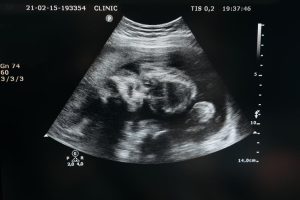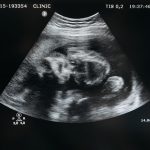
Covid And Flu: Understanding When To Go On Quarantine And When to Go On Self-Isolation
Guys, don’t say good bye to mask yet. Covid variants are out there and we need to take precautions. In addition, flu like symptoms are prevailing and people are having fever, cold, cough and sore throat. When tested for Covid-19, some are showing negative to the virus presence. Still the Covid cases are increasing across the globe.
So, you are vaccinated and might get confused when you get symptoms like Covid or flu. You have taken medicines and not sure what to do next? Quarantine or isolation? Here are suggestions from CDC and Health centers.
If you have a significant exposure to COVID-19
A significant exposure to COVID-19 as contact within 6 feet for more than 15 minutes without the protection of personal protective equipment such as a mask. Asymptomatic individuals who had significant contact with someone with a confirmed COVID-19 diagnosis should quarantine following their exposure.
If you are unvaccinated or completed your vaccine series and have not received your booster:
· Quarantine for at least five days following a high-risk exposure. The date of the last high-risk contact is considered day 0.
· Testing is encouraged on day 5 (and in some countries on day 7th -HL), If you continue to test positive, isolation should continue for 10 days.
· Wear a well-fitting mask around others for 10 days following exposure.
· Avoid people who are at high-risk of developing complications of COVID such as the elderly or immunocompromised.
· Carefully monitor for any symptoms of COVID during the 10 days following exposure. If any symptoms appear, isolate immediately and seek testing.
If you completed your initial vaccine series and received an mRNA booster :
· No quarantine is currently recommended.
· Testing is encouraged on day five. Antigen (home) testing is preferred if available. If you continue to test positive, isolation should continue for 10 days.
· Wear a well-fitting mask around others for 10 days following exposure.
· If any symptoms appear, isolate immediately and seek testing.
If you have recovered from COVID infection in the last 90 days:
· No testing is recommended unless new symptoms develop.
· Wear a well-fitting mask around others for 10 days following exposure.
If you test positive for COVID-19
· You should isolate for a minimum of five days from the start of symptoms AND after at least 24 hours of symptoms in the absence of fever-reducing medications and with improvement of other COVID-19 symptoms. The first day of symptoms is considered day 0.
· Wear a well-fitting mask around others for a full 10 days following the onset of symptoms.
· You should avoid others at high risk for COVID complications (for example, the elderly, nursing home residents, hospitalized patients or immunocompromised) for at least 10 days. In addition, you will want to avoid places where you are unable to wear a mask (such as restaurants) for 10 days.
· Testing can be considered on day 5. If you continue to test positive, isolation should continue for 10 days.
Presumptive COVID-19 Diagnosis and Test Results Pending
· If you go for a COVID-19 test and are presumed positive while your test results are pending:
· You should remain in isolation until results of your COVID-19 test are available.
· If your test results are significantly delayed, you can discontinue isolation five days from the start of symptoms and at least 24 hours fever-free in the absence of fever-reducing medications along with the improvement of other symptoms.
· If you have worsening symptoms, you are encouraged to contact your provider via video visit, E-visit or in the event of respiratory distress, chest pain or dehydration, the emergency room.
Presumptive COVID-19 Diagnosis and No Testing Performed (for example, low risk, symptomatic family members of known positive case)
If you are presumed to have COVID-19 due to symptoms or a symptomatic COVID-19 family member you should do the following:
· You can discontinue isolation after a minimum of five days from the start of symptoms AND after at least 24-hours of being fever-free (without fever-reducing medications) along with the improvement of other symptoms
· You should wear a well-fitting mask around others for a full 10 days from the onset of symptoms.
· Avoid others at high risk for COVID complications (for example, the elderly, nursing home residents, hospitalized patients or immunocompromised) for at least 10 days. In addition, you should avoid places where you are unable to wear a mask (such as restaurants) for 10 days.
· Testing can be considered on day 5. Antigen (home) testing is preferred if available. If persistently positive, isolation should continue for 10 days.
If you are isolating at home and receive a negative COVID-19 test
If you had a known high-risk exposure to someone with COVID-19:
· Quarantine is recommended if you are vaccinated but have not received a booster after completion of the initial vaccine series.
You receive another diagnosis like influenza:
If you are diagnosed with influenza, you should continue isolation until your fever has resolved for more than 24 hours without the use of fever-reducing medications or at least four to five days following the onset of symptoms. Influenza is most infectious during the first three days of symptoms (and the day before symptoms developed).
If you have continued symptoms without a definitive diagnosis:
If your symptoms are mild, you should remain isolated until symptoms improve. If symptoms persist without diagnosis, consider repeat testing for COVID-19 and influenza. If your symptoms worsen, have a reassessment. Options for reassessment include video visits, E-visits or in the event of symptoms such as increasing respiratory distress, chest pain, dehydration, etc., a visit to the emergency room.
Image credit: Image by Evgeni Tcherkasski from Pixabay (Free for commercial use)
Reference and more reading athttps://www.lvhn.org/news/when-should-you-self-isolate-or-quarantine# & www.cdc.gov
Author: HealthyLife | Posted on: January 25, 2022
« Warning signs of Diabetes in women Six Simple Steps For Weight Loss And A Healthier Heart »






















Write a comment